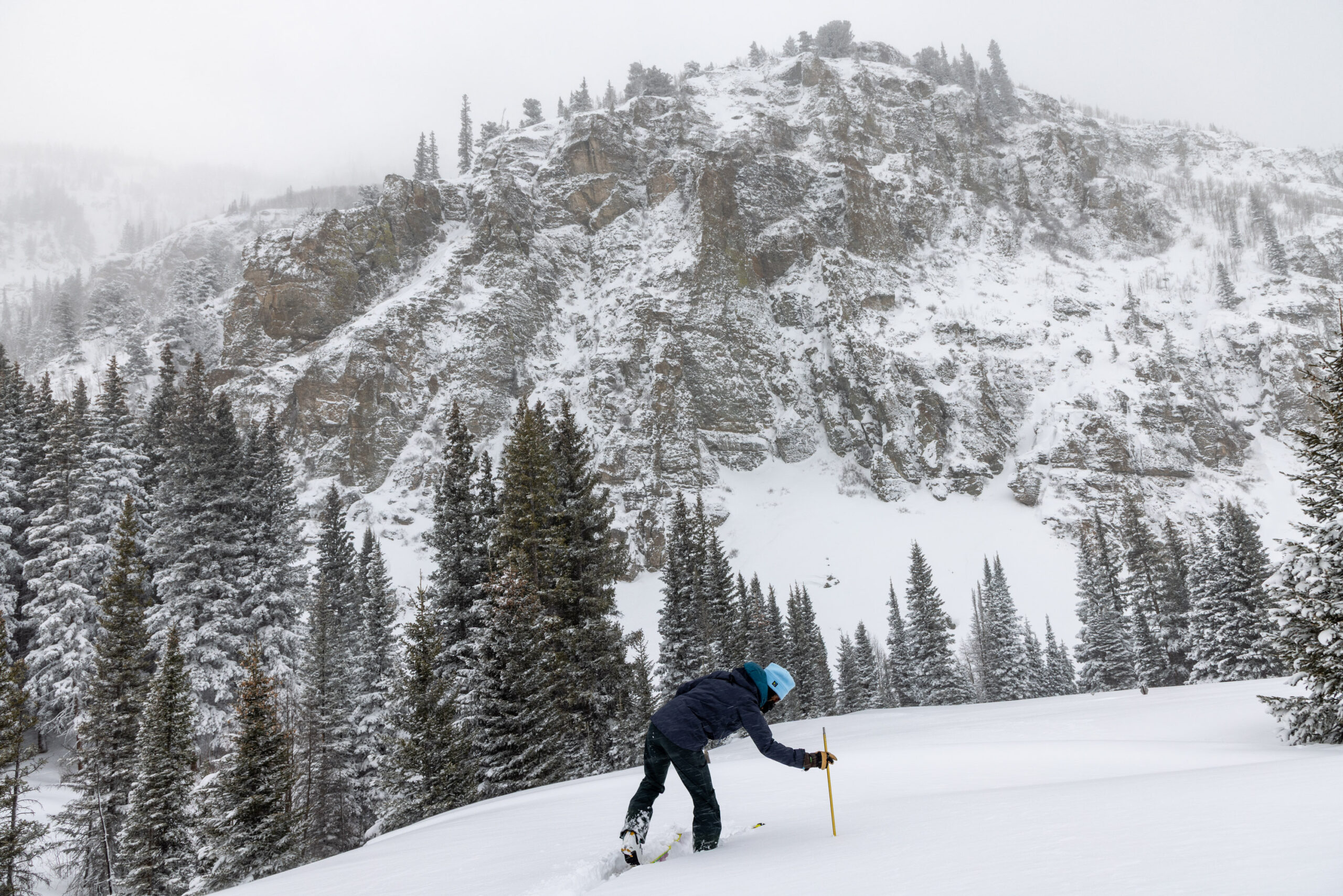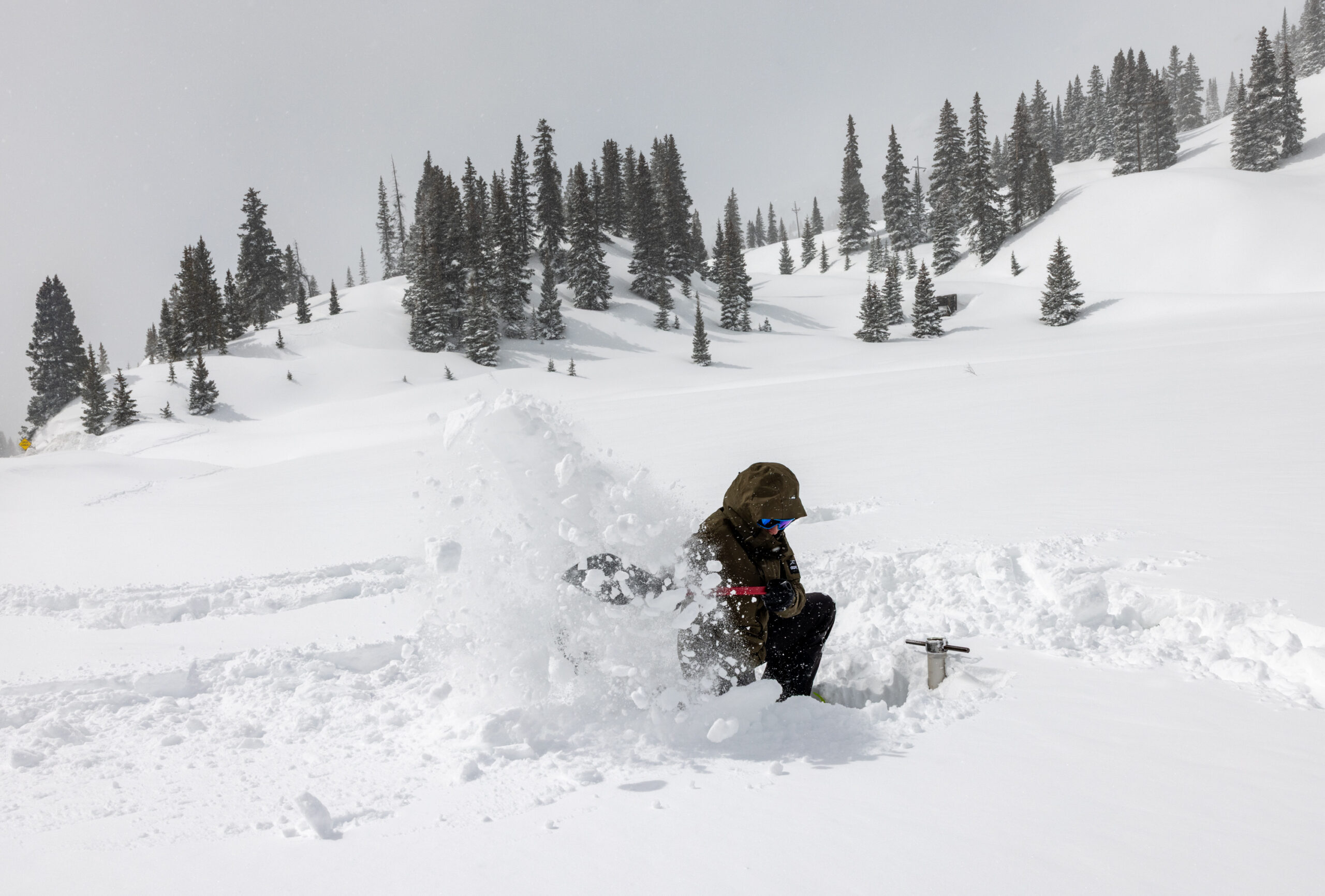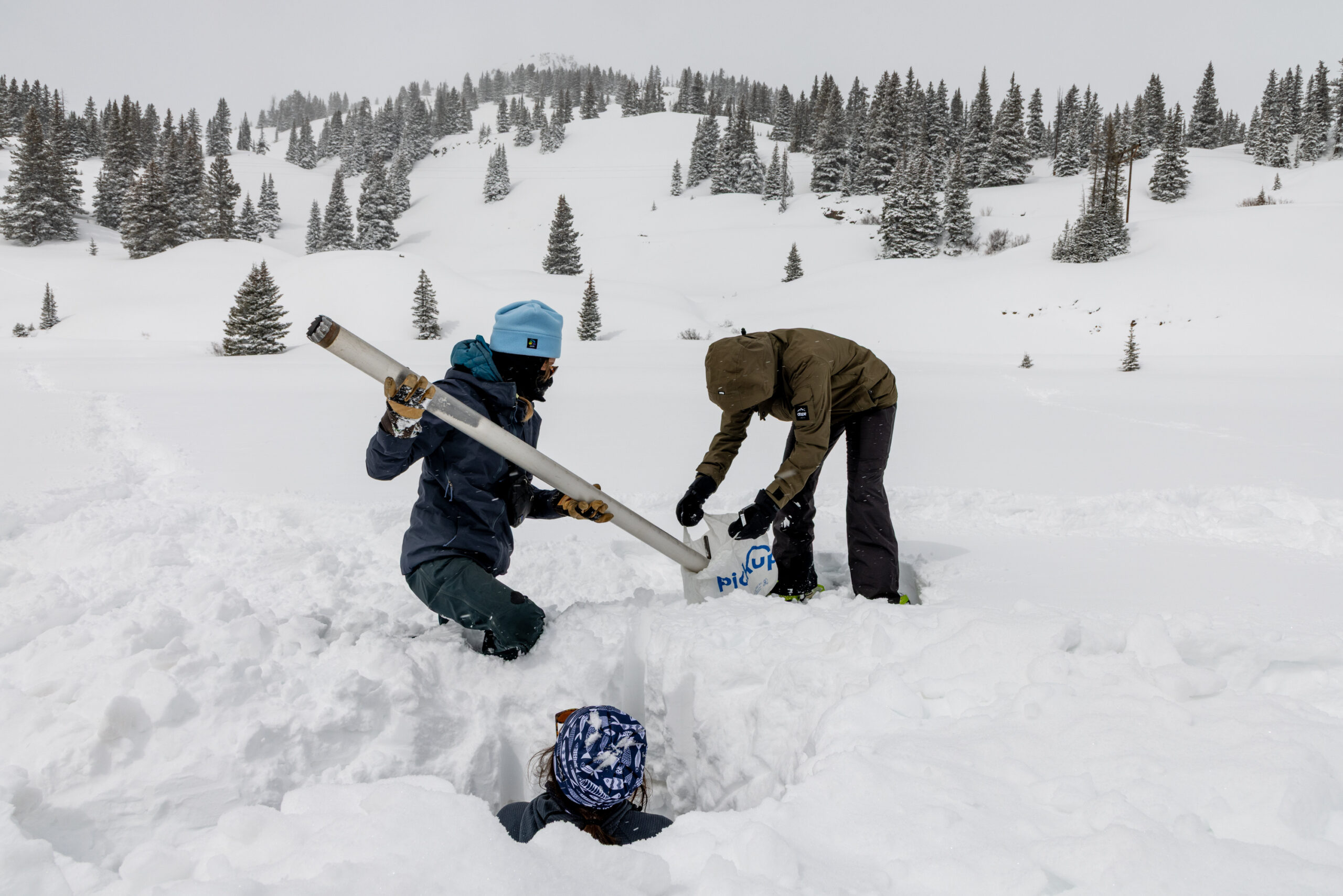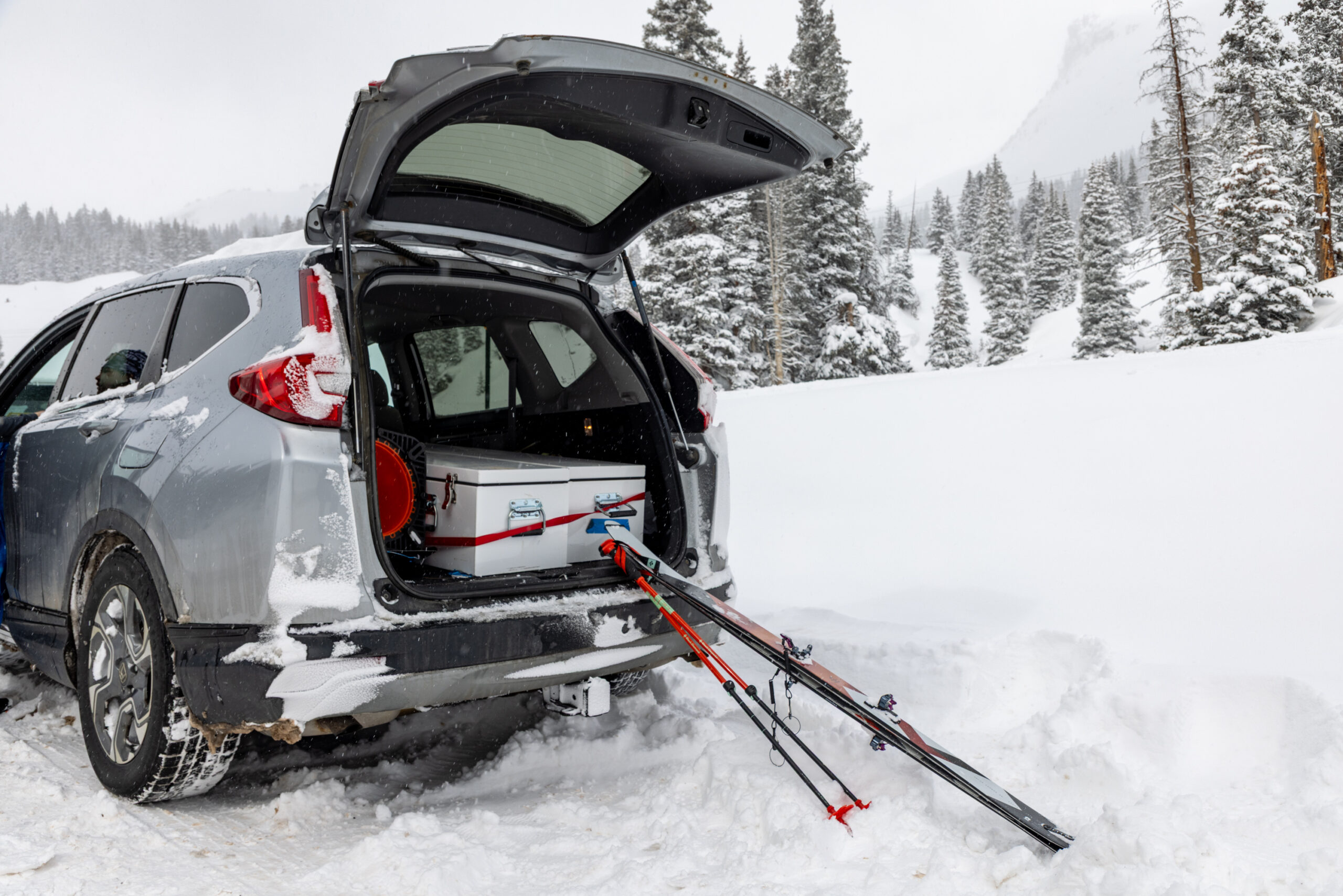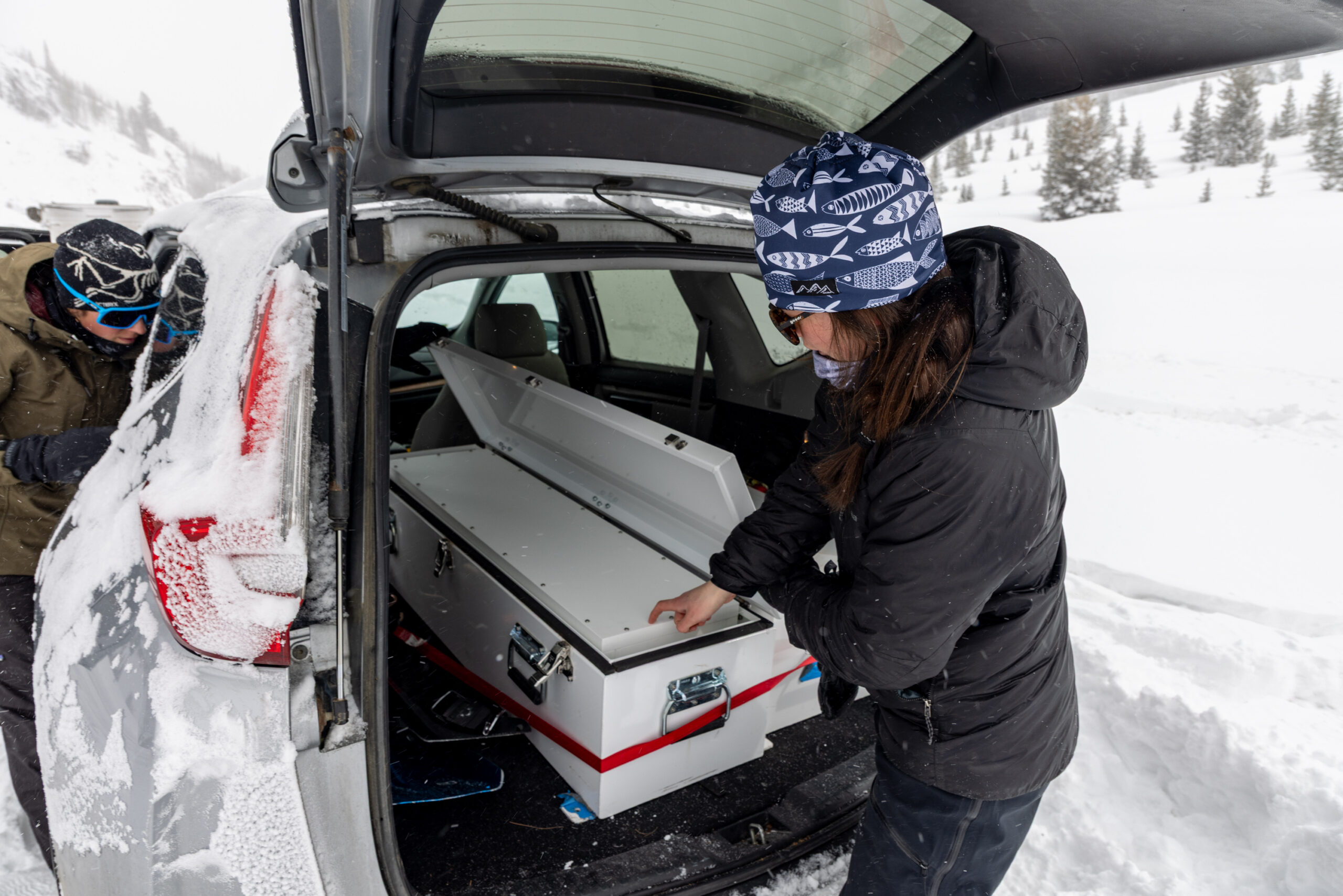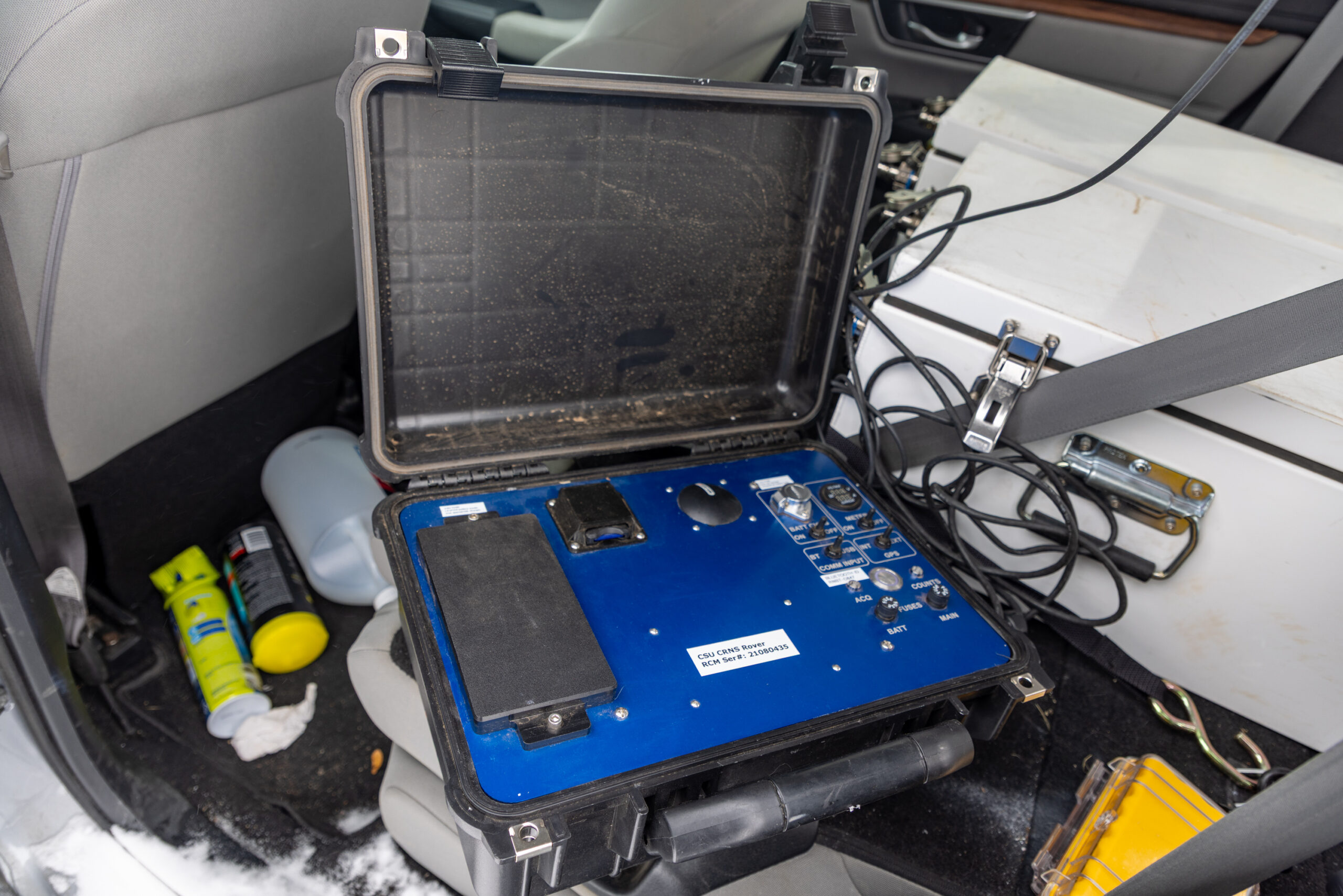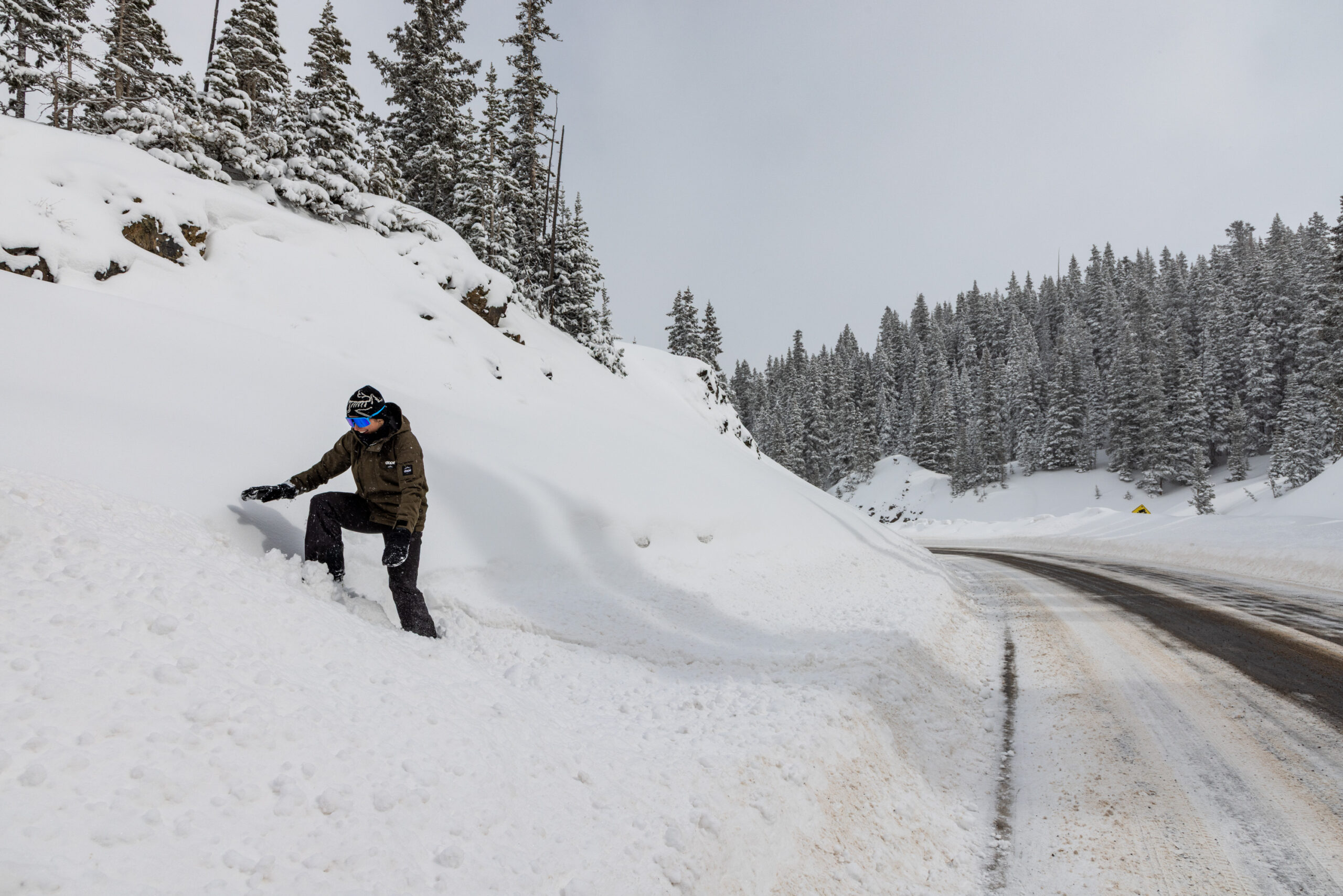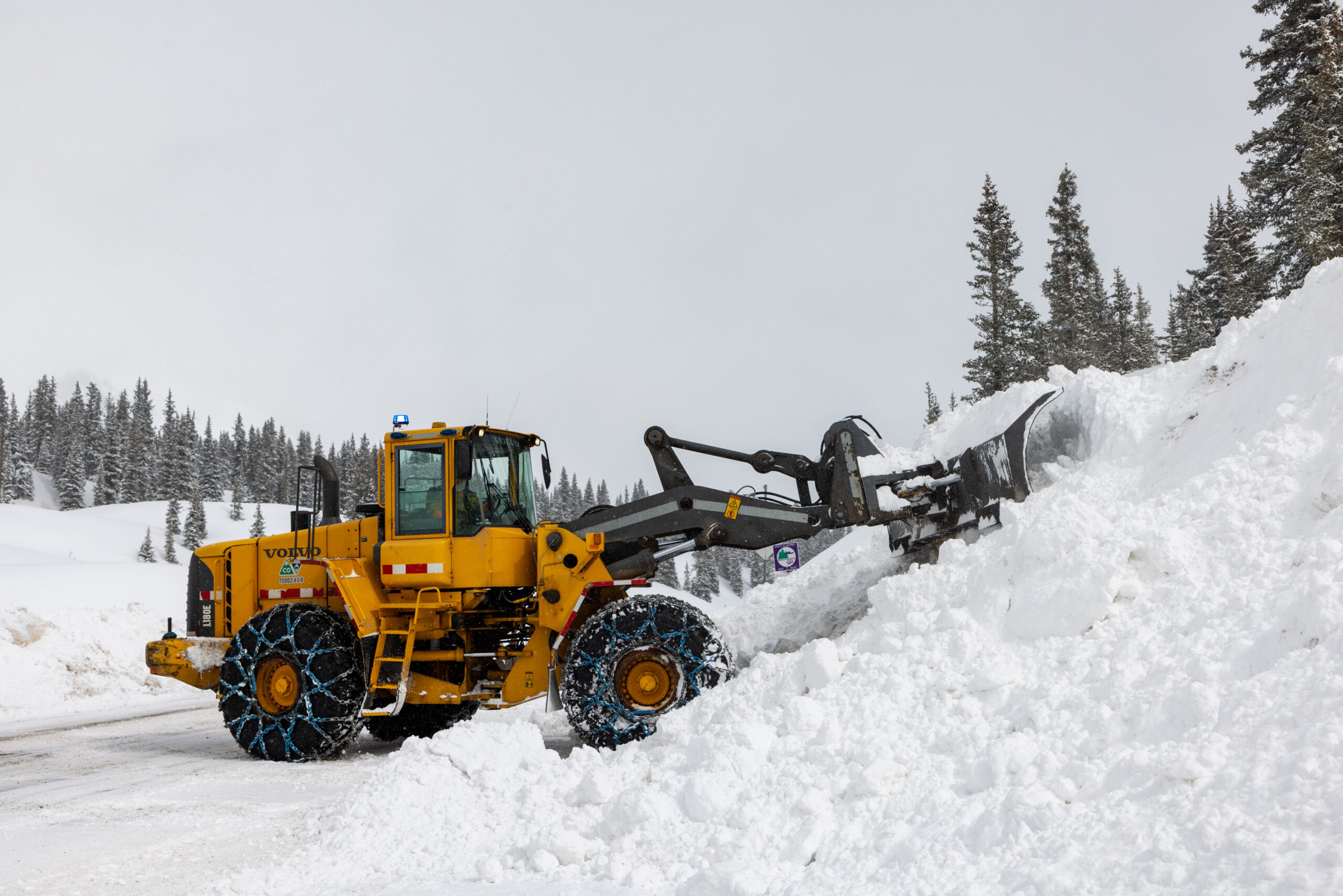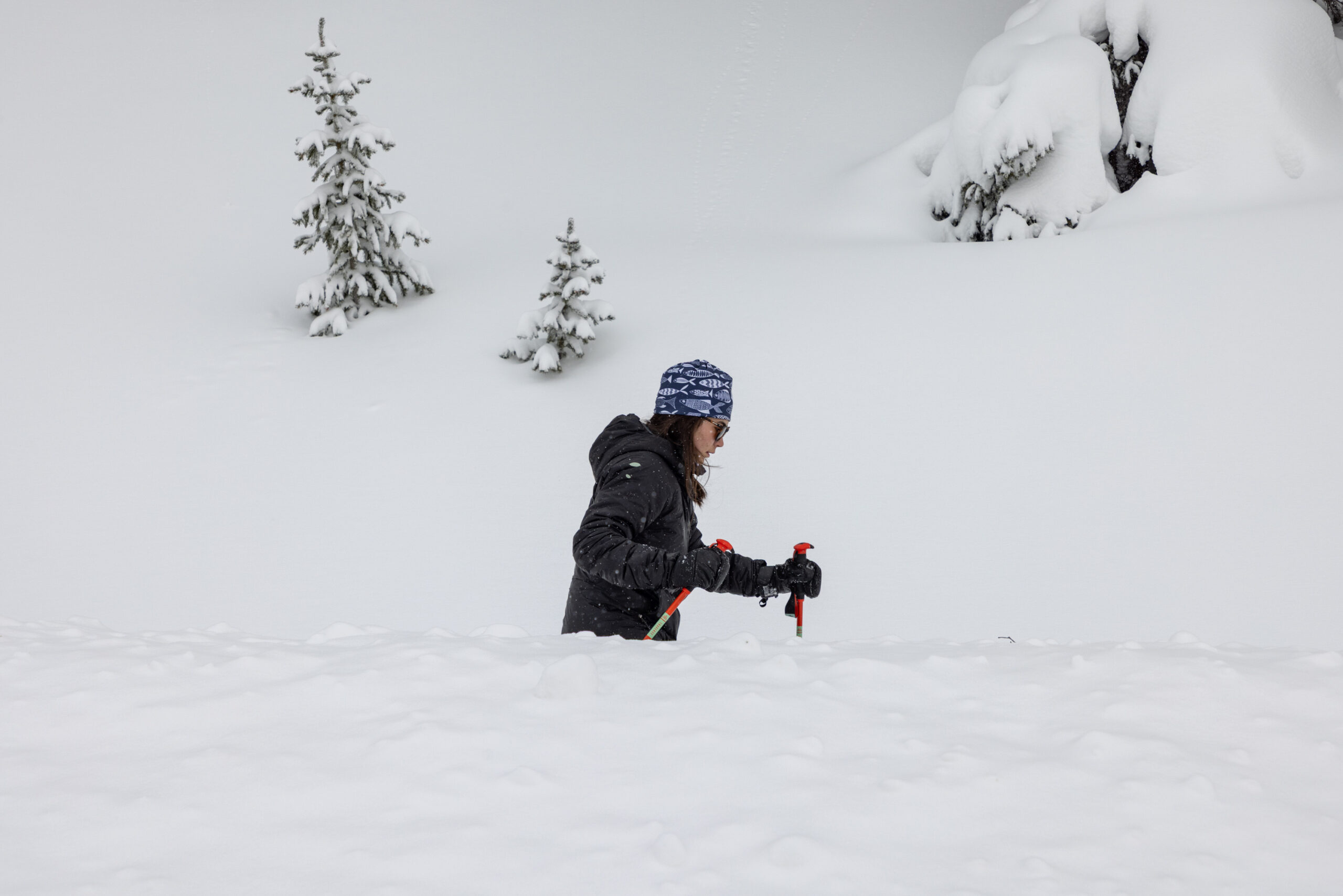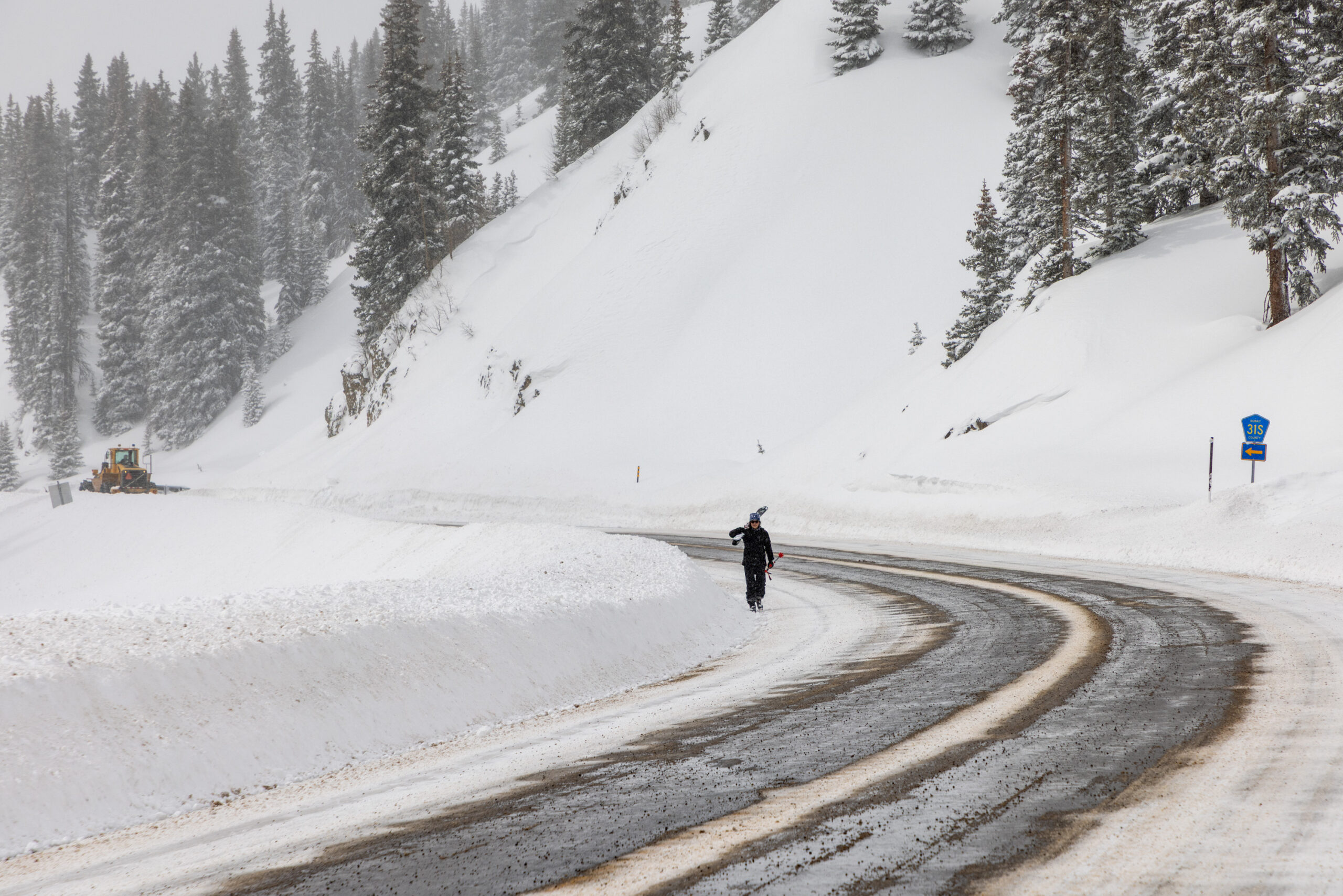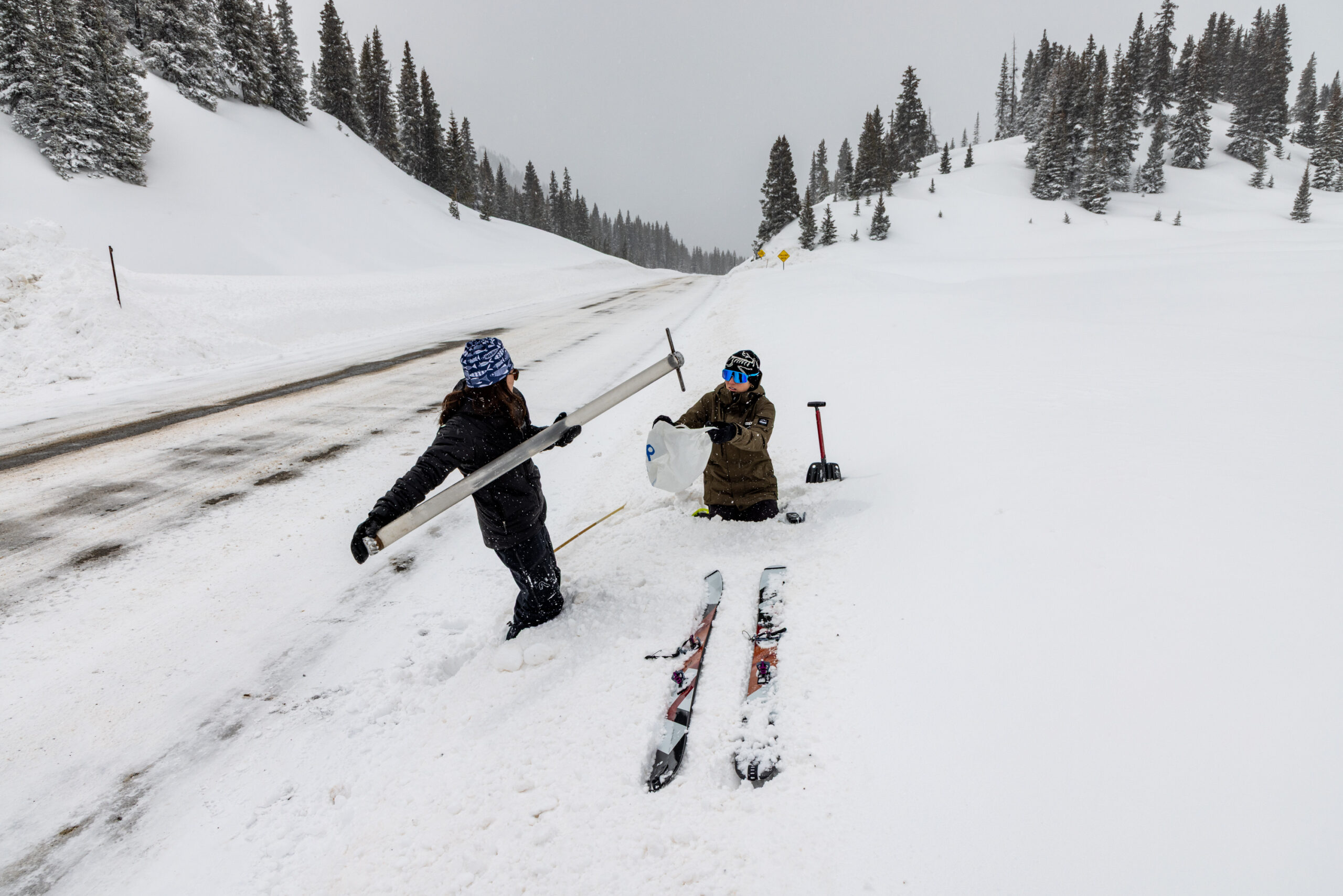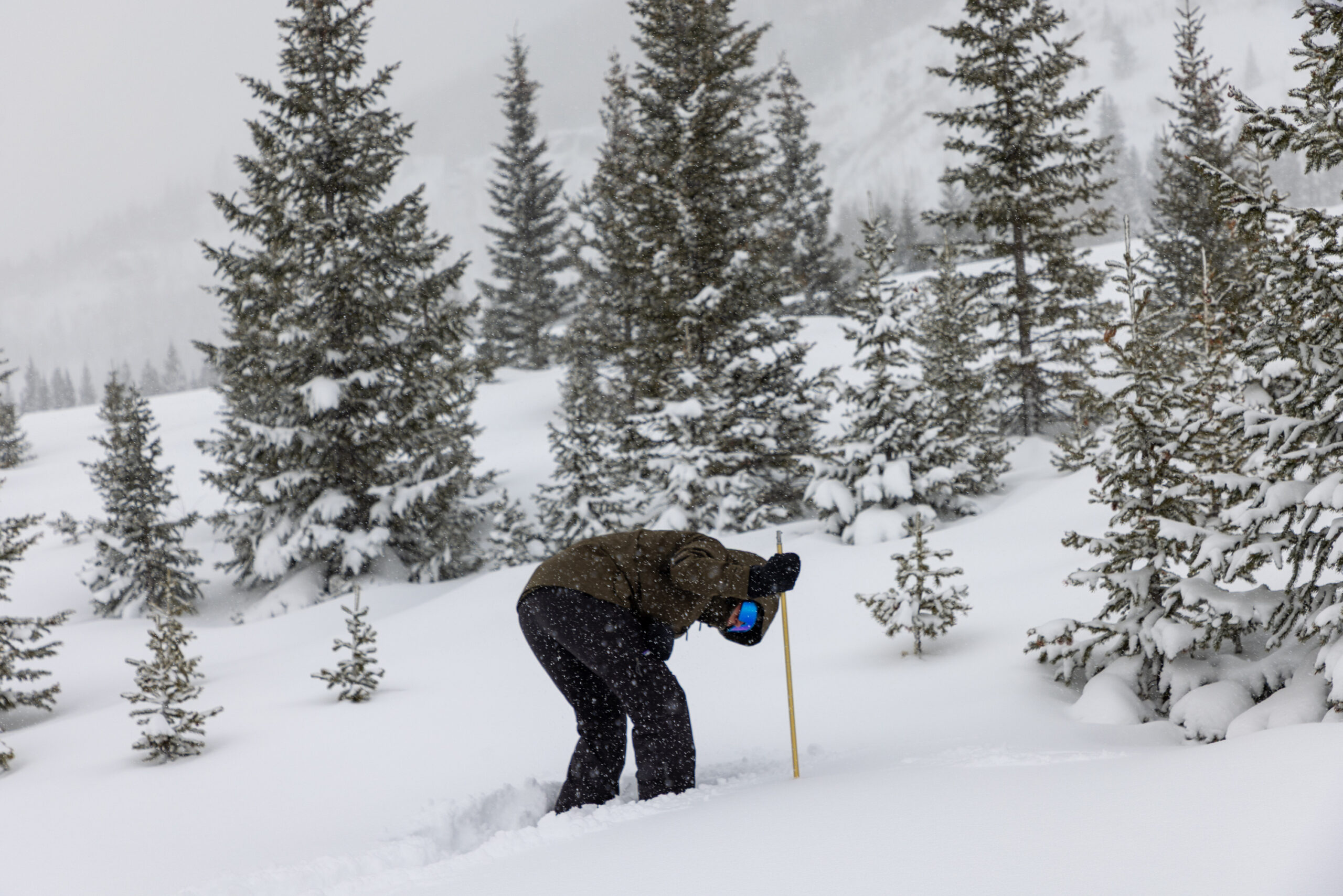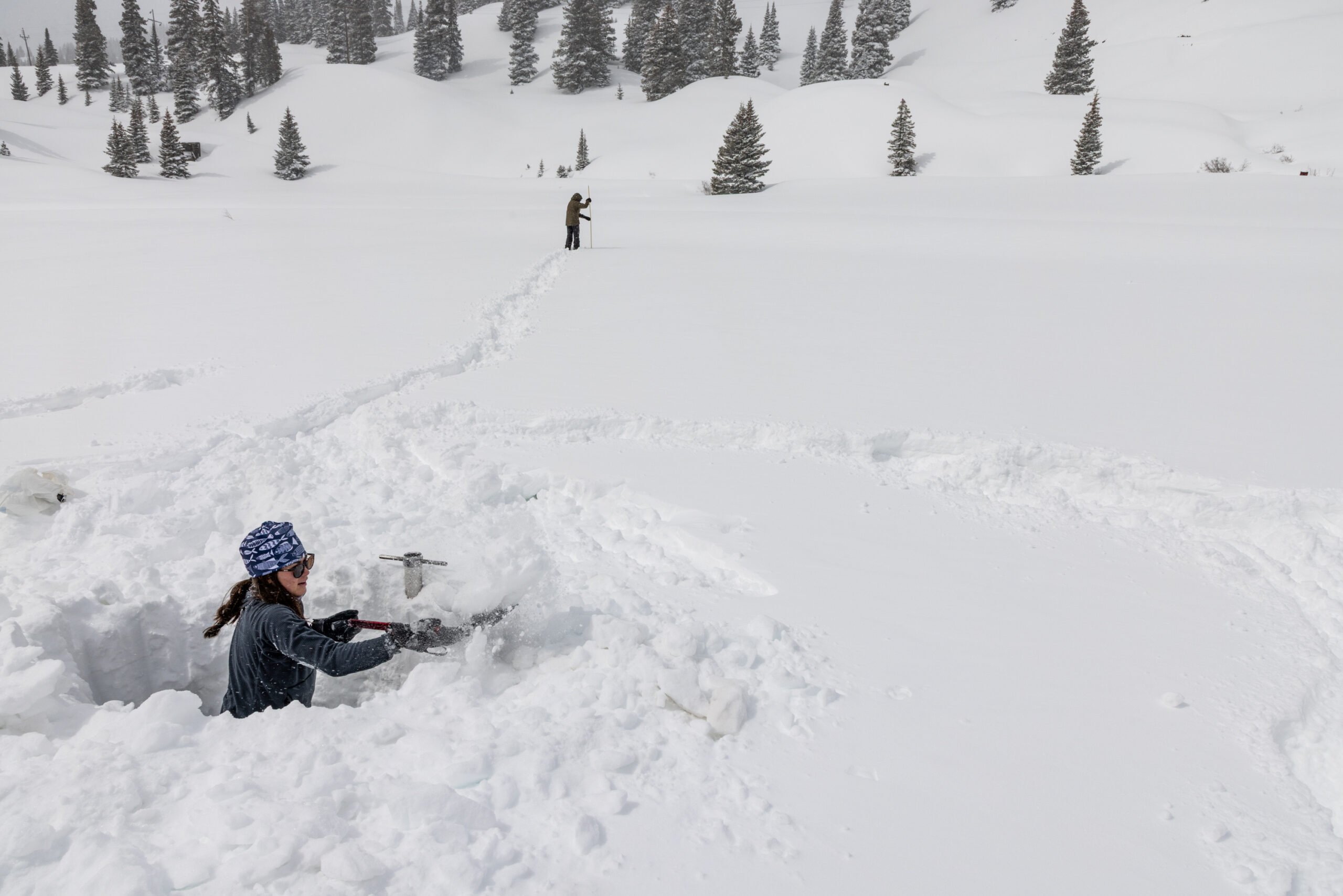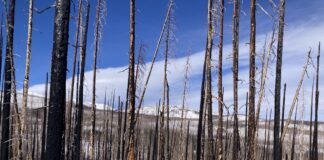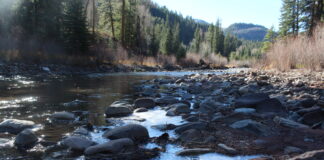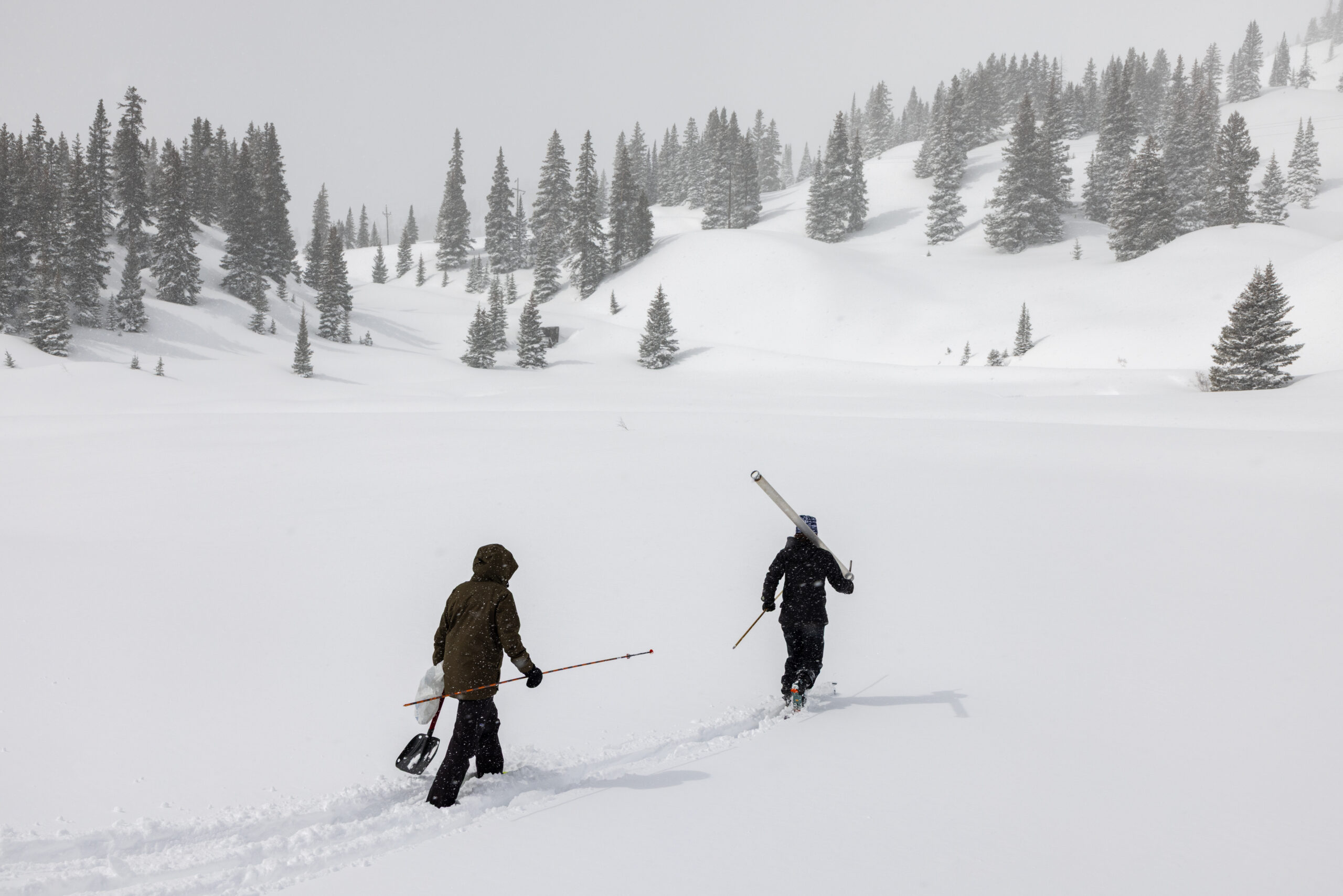
Red Mountain Pass, Colorado –
Cosmic rays come from outer space.
These high-energy particles, which emanate from the sun but also from beyond our galaxy, travel across the universe, nearly at the speed of light, to reach Earth.
Our atmosphere and magnetic field shield us from cosmic rays, but secondary particles shower down and reach ground level. These particles are harmless to us, but some of them interact with water at the Earth’s surface and can provide important data on how wet or dry the local conditions are.
For years, cosmic rays have been employed to measure soil moisture. Now, high in the San Juan Mountains of southwest Colorado, scientists have been investigating how to use cosmic ray neutron sensors to calculate the water content of the snowpack, known as snow water equivalent (SWE).
SWE (pronounced “swee”) is of keen interest to water managers, irrigators, rafters and many others downstream from these high-country frozen reservoirs, which serve like mountain water towers but are vulnerable to warming temperatures due to human-caused climate change.
On a recent snowy morning, I tagged along with three researchers who were taking readings of cosmic ray neutrons with a mobile sensor known as a rover. They also ground-truthed the nearby snowpack by measuring its depth and density to calculate its water content.
Using cosmic rays has the potential to provide much more data on SWE than traditional approaches that measure the snowpack at a single point because this novel method gauges the water content over a far larger area.
In the prior 24 hours, nearby Silverton Mountain ski area had reported 14 inches of new snow. Up around Red Mountain Pass, there was at least that much, and the fresh layer made it tough to get around, even on snowshoes. The temperature on my dashboard read 10 degrees, and the snow sometimes blew sideways, sending the wind chill well below zero.
“Basically, the goal of our project is kind of to see how well this rover is at estimating SWE,” said Christina Chow, a graduate student at Colorado State University whose thesis is looking into the benefits and limitations of the rover for use in water resource management.
Nearby, the $70,000 cosmic ray neutron sensor sat in metal cabinets in the back of a hatchback, quietly doing its thing.
The researchers drove the system along U.S. 550 at a steady 25 mph to take readings of the snow surrounding them. The scenic road, also known as the Million Dollar Highway, attracts tourists from around the world, especially during the warmer months when driving conditions on the serpentine path are less of a white-knuckle affair.
At a few points along the highway, the trio of researchers stopped to take measurements of the surrounding snowpack.
One of the crew’s tasks was using an app on their phones to measure the dimensions of the snowbank beside the highway so that it could be factored into the calculations derived from the sensor. In some places, snow plows and heavy machinery had concentrated the snow into towering masses that were downright challenging to climb.
The researchers also fanned out from the road to take readings of the snow depth and used a hollow tube to extract a core of the snowpack. That snow was then emptied into a plastic grocery bag and weighed in order to calculate its density and the SWE.
The tasks seemed challenging given the working conditions–my fingers were frozen even inside gloves–but the trio seemed in high spirits.
“It’s awesome to be out here,” Chow said. “We’ve had a couple cold days, so that’s been challenging, just to kind of warm up and everything, but, yeah, it’s been a blast.”
The rover takes a weighted average of the snowpack with a radius of about 200 meters (656 feet), so it provides data on a large area compared to traditional methods of measuring the snowpack at individual points, both by hand and with automated sensors known as SNOTEL stations.
“This is actually measuring SWE,” Chow said. “Not a lot of things can do this at this scale . . . it’s not at a point scale. It’s at this big, big footprint.”
SNOTEL stations remain the backbone of monitoring the mountain snowpack in the West and may have decades of data to analyze, but they’re fixed in space and don’t register how wind, shade and other factors may alter snow accumulation nearby.
While it’s convenient to drive with the rover on a highway, “the road has a signal that we have to account for,” Chow said.
Was the snowfall we were experiencing influencing the activity of the cosmic ray neutrons?
“We’ve been thinking about that a little bit. I’m not entirely sure,” Chow said. “Snow in the atmosphere will slow neutrons as well, so I’m sure it has some sort of signal.”
Another challenge? The complicated science behind cosmic rays.
“I’m still trying to get my head around all the nuclear physics,” Chow said.
So about those cosmic rays. They were first discovered in 1912 through experiments using a high-altitude balloon that earned physicist Victor Hess the 1936 Nobel Prize. The term “cosmic rays” was coined in 1925 by Nobel laureate and former University of Chicago faculty member Robert Millikan, according to this piece by the school, which notes:
“In the 20th century, cosmic rays helped scientists discover antimatter and the muon—the first evidence for subatomic particles beyond the proton, neutron and electron. Cosmic rays can also tell us about the chemical and physical makeup of the universe; about how the universe has changed over time; and what happens around supermassive black holes and in the hearts of exploding stars.”
The word “ray” is a misnomer because they’re actually high-energy particles. Here on Earth, the sun is considered the main source, but scientists have also documented them coming from galaxies beyond the Milky Way.

The cosmic rays that hit our atmosphere produce fast, high-energy neutrons that are able to reach the snow and underlying soil. There, they interact with water molecules, in particular the hydrogen atoms, causing some of the neutrons to be slowed. If the sensor detects fewer fast neutrons, that means there’s more hydrogen–and water–in the area.
“In simplified terms, the lower the neutron count, the higher the presence of water,” according to a summary of the project in the San Juans by one of the partners, the Center for Snow and Avalanche Studies in Silverton.
This year, the researchers are driving the rover along 45 miles of U.S. 550 and periodically stopping to take readings at 10 sites. Next year, they’ll shift to pulling the rover behind a snowmobile in the backcountry on unpaved roads, which will eliminate the effects of pavement and snowbanks. The year after that, they’ll use the technology in southwest Colorado’s Dolores River watershed, part of the larger Colorado River Basin.
“This study will be the first to extensively test a Cosmic Ray Neutron rover for SWE estimation,” according to the Center for Snow and Avalanche Studies.
Using cosmic rays to measure the snowpack could occupy the space between two technologies that are currently employed: fixed SNOTEL stations that provide data on a single point, and flights by Airborne Snow Observatories, which can measure snow depth and SWE over a whole watershed.
“This cosmic ray approach might be the middle guy where it’s not expensive, you can drive it at any time, you can get the data at any time,” said Jeff Derry, executive director of the Center for Snow and Avalanche Studies. “So if you had a wet spell or dry spell or whatever and you want to see changes over time, you can just go out and drive any old time you want.”



